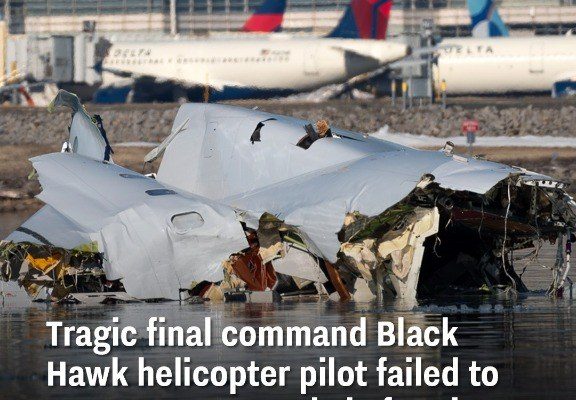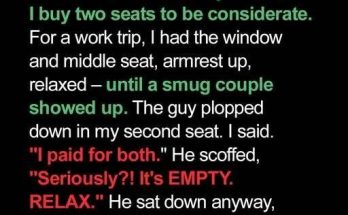
In what has become one of the deadliest aviation disasters in recent American history, the collision between an American Airlines commercial aircraft and a U.S. Army Black Hawk helicopter over the Potomac River in late January claimed the lives of 67 people. As investigators continue to piece together the sequence of events that led to this tragedy, a complex picture is emerging of communication failures, training procedures, and potential technical issues that converged in those fatal moments over the nation’s capital.
The Incident: A Timeline of Tragedy
On that fateful January evening, American Airlines Flight 5342 was making its final approach to Ronald Reagan National Airport, following a routine commercial flight path into one of the nation’s busiest airspaces. Simultaneously, a U.S. Army UH-60 Black Hawk helicopter was conducting a training exercise in the vicinity, carrying a crew of three military personnel including a pilot undergoing specialized training.
Weather conditions that evening were reported as clear with good visibility, though darkness had already fallen over the Potomac River, which separates Washington D.C. from Virginia. The airspace surrounding Reagan National Airport is known among aviation professionals as particularly complex due to its proximity to numerous restricted zones protecting governmental facilities and monuments, as well as its position within the Washington, D.C. Special Flight Rules Area (SFRA).
At approximately 8:46 p.m., co-pilot Andrew Eaves, who was supervising the helicopter training mission, requested permission from air traffic control for the helicopter’s pilots to operate using visual flight rules rather than relying solely on controller guidance. This request, a standard procedure often used to expedite operations, was granted by the tower. This decision would later be scrutinized as one of several critical junctures that preceded the disaster.
Just minutes later, the two aircraft collided over the Potomac River. The impact was catastrophic, sending both the commercial airliner with its 64 passengers and crew and the military helicopter with its 3 crew members plunging into the dark waters below. First responders rushed to the scene, but it quickly became apparent that there would be no survivors from either aircraft.
The Investigation: Piecing Together the Puzzle

In the aftermath of the collision, the National Transportation Safety Board (NTSB) launched an immediate and comprehensive investigation, deploying specialists in air traffic control procedures, aircraft operations, human performance, and aircraft systems. The investigation has involved extensive analysis of radar data, air traffic control recordings, cockpit voice recorders, and flight data recorders recovered from the wreckage.
NTSB Chairman Jennifer Homendy has provided several updates as the investigation has progressed, highlighting key findings that point to a series of misunderstandings and missed communications rather than a single catastrophic failure.
“We are looking at the possibility of there may be bad data,” Homendy stated during one press briefing, referring to altitude information that may have confused the helicopter crew. This statement came after investigators discovered discrepancies in how the helicopter crew perceived their altitude. According to preliminary findings, one pilot believed they were flying at 400 feet above the water, while another thought they were at 300 feet. The exact altitude at the time of impact remains under investigation.
Further complicating matters was a phenomenon known in aviation as “stepping on” transmissions. Homendy explained: “In addition to this, the transmission from the tower, that instructed the helicopter to go behind the plane, may not have been heard by the crew. The pilot may have keyed her radio at the same second and stepped on the transmission from ATC.” This radio behavior, where one transmission overrides another when they occur simultaneously, potentially prevented critical safety instructions from reaching the helicopter crew.
Critical Moments Before Impact
A subsequent report by The New York Times has revealed more details about the final moments before the collision, particularly regarding the actions of the helicopter crew. According to this reporting, pilot Rebecca Lobach, who was undergoing training, failed to heed a warning from her flight instructor seconds before the impact occurred.
The sequence of events becomes particularly critical around 8:46 p.m., when co-pilot Andrew Eaves requested approval for the helicopter’s pilots to use their own visual reference points instead of relying on air traffic control guidance to avoid other aircraft. While this practice is common and often helps to streamline operations, it also introduces an additional element of human judgment into an already complex system.
What makes this particular request significant is that Lobach apparently missed subsequent instructions from Eaves, who was overseeing her training mission. The nature of these instructions has not been fully disclosed, but they may have included critical guidance about positioning relative to the approaching American Airlines flight.
In the final moments before collision, air traffic control made one last attempt to ensure safety by asking the helicopter crew if they had visual contact with American Airlines Flight 5342. This transmission represents the last recorded communication between controllers and either aircraft before the collision occurred.
Technical Factors Contributing to the Disaster
Beyond human communication issues, investigators have identified several technical factors that may have contributed to the tragedy. Perhaps most significantly, certain tracking technology aboard the Black Hawk helicopter had been deactivated during the training mission


